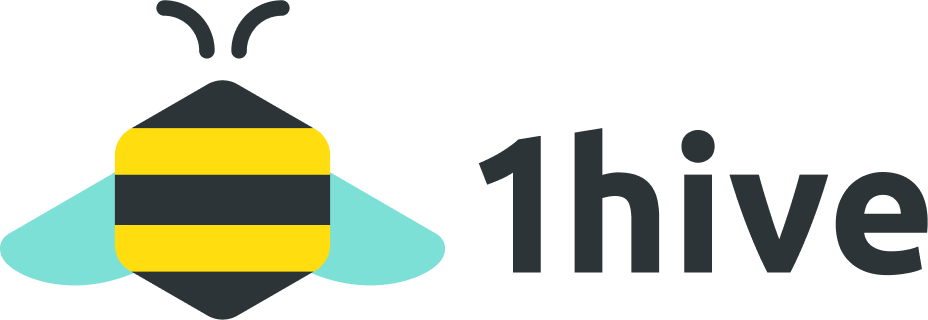This is the second of a three-part series of articles to highlight the outcomes from the last 10 months of work in the Commons Swarm.
- Part 1: The Augmented Bonding Curve: A plug-and-play bonding curve
- Part 2: The Hatch: A fundraising module for DAOs
- Part 3: EVM-Crispr: A tool to mutate a DAO’s DNA
In this article we explore the tools developed by the Commons Swarm to run a DAO fundraising such as the one TEC did in July. The tools are modular enough to compose a hatch that meets a DAO’s specific requirements: should it have an allow list or not? Does it have sweat equity? Should people be able to rage quit?
The Hatch
The Hatch App (previously known as presale) is an app initially developed by Aragon Black. The Hatch App’s purpose is to collect contributions made in a specified token, over a period of time, and mint a proportionate amount of DAO tokens in exchange for the users who made contributions.
The original implementation required to specify a goal amount of collected tokens. If the amount was not reached, the tokens were refunded, and if it was reached, the fundraising was closed immediately. It also worked only in the context of the Fundraising Template without being able to use the app alone.
The Commons Swarm reuses the previous code, while changing the logic to be able to specify a minimum and a maximum goal. If the minimum goal is not reached the contributed tokens are refunded and if the maximum goal is reached the Hatch ends immediately. Meanwhile the max goal is not reached, the fundraising continues until the end of the specified duration. The application can now also be used in a standalone manner, in conjunction with some add-ons (Impact Hours and Hatch oracle), or in the context of a fully-featured template (Hatch template).
Impact Hours
Impact hours is an app that can be used alongside the Hatch App. It mints tokens to pay for sweat equity (work/time put into a project) when the Hatch has ended.
Instead of minting a pre-fixed amount of tokens to the workers (ex 3%), it mints an amount derived from the funds raised in the Hatch. These funds are denominated in the Hatch’s accepted contribution token. The more funds that are raised, the smaller the percentage the workers receive. This intends to align the incentives between workers and funders.
We determine the rate of each Impact Hour with the following formula where the independent variable (x) is the total funds raised:
The formula has three parameters:
- R : Impact Hour Rate at Infinity, specified in contribution tokens per Impact Hour. It’s an asymptotic limit never reached, no matter how much funds are raised.
- r : Impact Hour Rate at Target Goal, specified in contribution tokens per Impact Hour. How much should each Impact Hour should be worth in contribution tokens if a specific goal is reached?
- G : Target Goal, a specified amount in contribution tokens that lies between the minimum and maximum goal.
You can learn more about Impact Hours in this original thread, and in other one in which we do the calculation by hand.
The Hatch Oracle
The Hatch Oracle is an app that can be used to limit the amount an account can contribute to the Hatch. It analyzes accounts that hold defined “membership tokens” to quantify the membership score of said accounts. From this information, it determines the total amount of funds these accounts can contribute to the Hatch.
The Hatch Template
The Hatch Template makes use of the previous applications to bootstrap a DAO treasury and designate the initial token holders of the DAO’s token. It makes use of the redemptions, dandelion voting, tollgate, and migration tools as well to let the initial token holders decide what to do with the raised funds.
- Redemptions: Enables Hatch token holders to redeem their tokens for a portion of the raised funds on a pro rata basis. This is a ragequit mechanism put in place to allow token holders to exit the Hatch, in the event of governance decisions they do not align with.
- Dandelion Voting: Used by token holders to collectively decide how to use the funds within the DAO.
- Tollgate: Adds a fee to create a proposal with dandelion voting to prevent spamming of proposals.
- Migration Tools: Used to migrate the funds to a new DAO Commons DAO and mint tokens for all Hatch token holders who did not ragequit. This migration event is usually referred to as a ‘Commons Upgrade’ when the Hatch ‘upgrades’ into a Commons.
You can have a better look at how all these apps work together in this machine state diagram and the TEC Hatch implementation specification.
In Sum
These are just a taste of the fruits from the better part of a year of work from the Commons Swarm. The Hatch DAO and it’s complementary smart contracts move a step forward the road started by Aragon Black in 2019. We hope the ability for organizations and communities to bootstrap and collectively decide how to use the funds will empower groups across the Ethereum ecosystem and 1hive.
Please take some time to read the first article in this series if you haven’t already. And stay tuned for the final installment in the series!
This article has been written by me and @divine_comedian. I’d love to thank the second for the dedication he put in improving the quality of it.
